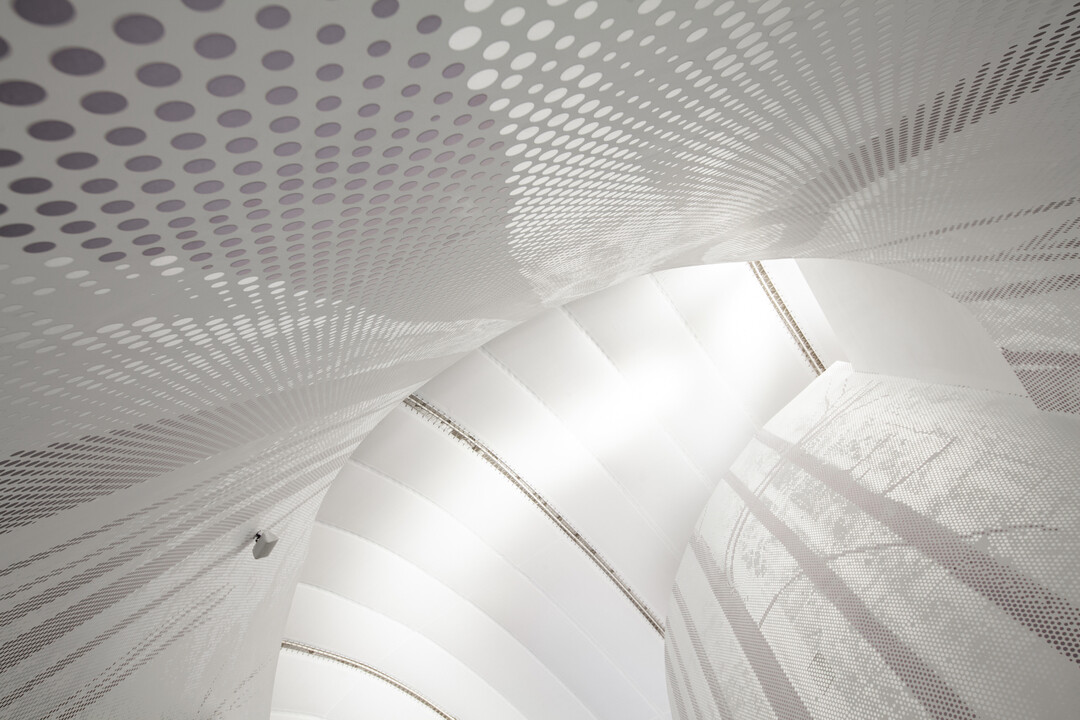
Members Only
Please join as a member and click "Members Only" to read more complete articles and exclusive content.

Please join as a member and click "Members Only" to read more complete articles and exclusive content.
AKAARI(日文意為「紅螞蟻」)是位於河內的老牌連鎖日本料理店,本次室內空間改造盼能營造出新的氣象,透過設計,把越南文化的精索融入日式餐廳。越南與日本兩個國家有共同點,例如竹子、藤編與陶瓷製等手工藝品相當豐富多樣,深受喜愛。透過這項計畫,我們想肯定這些材料具備的潛能,把這些材料應用到大型的位置,為其注入新生。在翻新之前,這棟房子是兩間街屋,座落於河內新都會區。建築是以玻璃包覆的混凝土建築,這是具有現代性的堅固材料。
我們的挑戰在於如何打造出餐廳空間,使之兼顧舒適友善的氣氛,並擔任越南與日本文化的橋梁。這間餐廳的設計中,每層樓挑高約4.5公尺,這樣可把公共人流空間高度拉高,有益通風。諸如入口大廳與二樓用餐區等大型空間,是採用室內木造屋頂當天花板。私人包廂也讓人在進入餐廳後,會覺得像來到另一個住家空間,和外頭枯燥乏味的街區予人的印象形成對比。
二樓天花板採用的系統像雲朵低垂,可遮蓋部分設備,產生雲朵在空間飄浮的效果。二樓私人包廂的設計則類似夾層,登上鐵製階梯即可進入,這間包廂以大型藤編牆當成隔間牆,這麼一來,依然能與花園保持整體性,不會涇渭分明,將之屏蔽在外。三樓大廳的天花板採木架構系統,營造深度與高度,賦予天花板自由感。原建築立面是面對前方的大公園,卻朝向西邊。設計師在大片玻璃窗旁安排庭園空間作為緩衝,以防強烈的自然光直射室內,同時也能裝飾空間。用餐者可感受到庭園層層展開,可連接到房間,也連接到公園。
入口大廳與公共空間的地面混合碎石與細骨料混凝土,色彩繽紛的磁磚來自河內知名製陶村——鉢塲社,並應用到二樓壽司吧與用餐空間。這層樓的步道會通往包廂,但設計上能讓人隨心所欲,決定行進方向,這麼一來空間似乎沒有局限性,用餐者會心情放鬆,像走進花園。主樓梯以鋼、木頭與藤造欄杆系統打造,不僅在室內呈現裝飾效果,並可確保樓梯周圍的四層建築,能保持垂直空氣對流。在這項計畫中,我們嘗試讓製燈師與手工藝師傅的技藝發揮到最大,進入新境界,他們的手藝可成為建築元素,例如門、隔間、天花板、樓梯欄杆⋯⋯等。編織物的大小與隔牆皆經過研究,確保具備隔間的機能,但十分輕盈,不會產生堅固牆面的僵硬感。